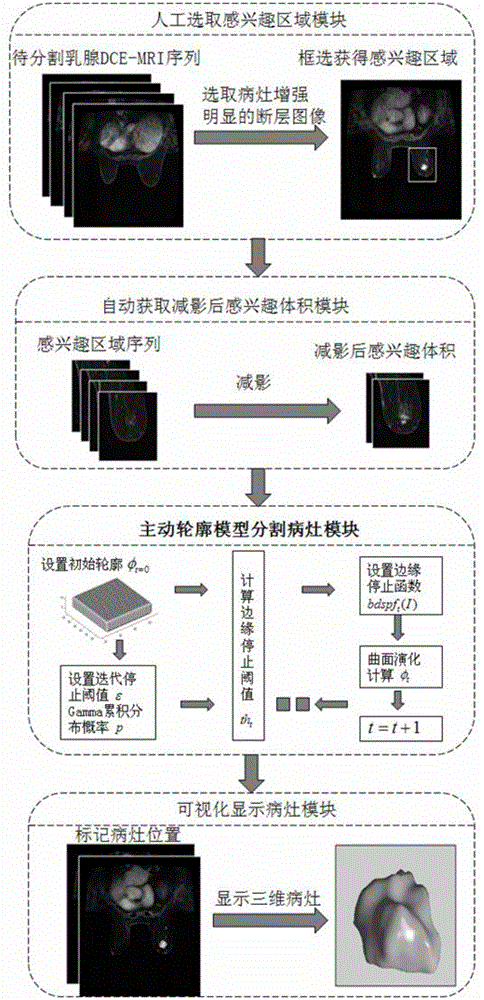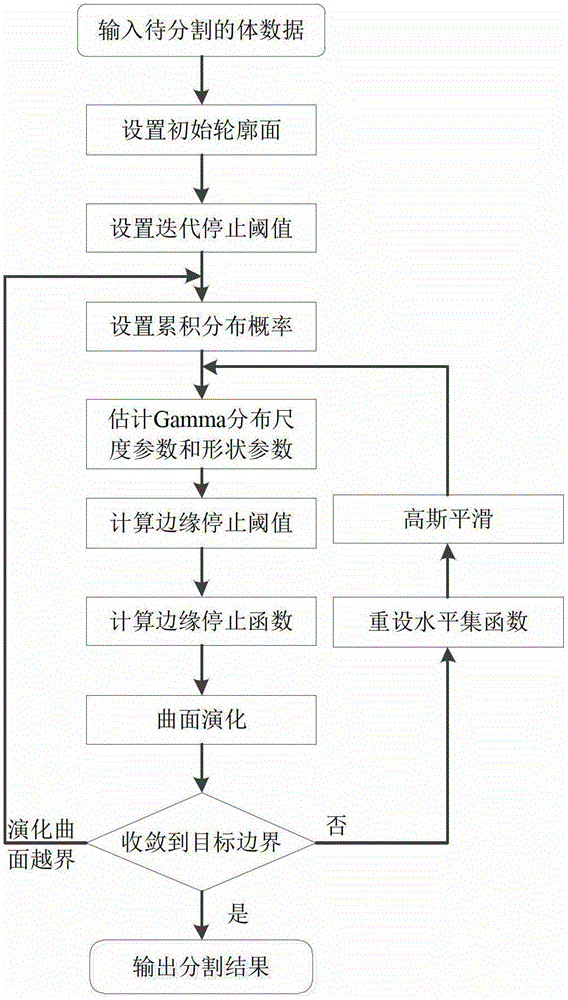Active contour model based method for segmenting mammary gland DCE-MRI focus
A technology of DCE-MRI and active contour model, applied in image analysis, image data processing, instruments, etc., can solve the problems of fuzzy lesion boundaries, inability to cover the overall situation of lesions, and lack of statistical characteristics
- Summary
- Abstract
- Description
- Claims
- Application Information
AI Technical Summary
Problems solved by technology
Method used
Image
Examples
Embodiment Construction
[0051] The implementation method of the present invention will be described in further detail below in combination with examples and accompanying drawings.
[0052] In order to implement the breast DCE-MRI three-dimensional lesion segmentation method proposed by the present invention, it needs to follow the following steps: figure 1 In the process shown, the breast MRI image sequence data of the examinee is obtained from the MRI scanning equipment and screened by the image preprocessing workstation, and the filtered data is saved in the MRI image storage server used to save all the examinee image sequences, and then The MRI image post-processing workstation obtains the image sequence to be processed from the MRI image storage server for analysis and calculation. The construction of the three-dimensional breast lesion segmentation system in the MRI image post-processing workstation includes the module of manually selecting the region of interest, the module of automatically obt...
PUM
 Login to View More
Login to View More Abstract
Description
Claims
Application Information
 Login to View More
Login to View More - R&D
- Intellectual Property
- Life Sciences
- Materials
- Tech Scout
- Unparalleled Data Quality
- Higher Quality Content
- 60% Fewer Hallucinations
Browse by: Latest US Patents, China's latest patents, Technical Efficacy Thesaurus, Application Domain, Technology Topic, Popular Technical Reports.
© 2025 PatSnap. All rights reserved.Legal|Privacy policy|Modern Slavery Act Transparency Statement|Sitemap|About US| Contact US: help@patsnap.com



